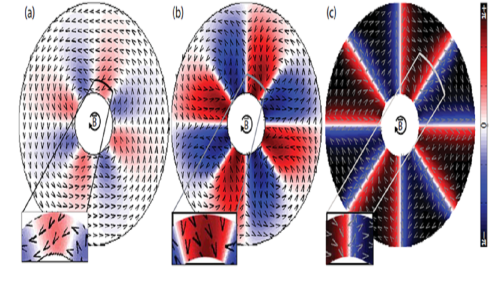Magnetic random access memory (MRAM) would combine the benefits of the hard drive (non-volatile, cheap, high density of bits) with the benefits of RAM (fast, mechanically robust). One proposal for MRAM involves the vortex state of nanorings, a state in which the magnetic moments align circumferentially in the clockwise or counterclockwise direction. For a symmetric ring in a uniform field, these states are energetically degenerate and cannot be selected experimentally. A circular field allows us to study the switching behavior between these vortex states. We have developed an experimental technique to apply a local circular field by passing current through the tip of an atomic force microscope. I will discuss how the atomic force microscope works, our experimental results demonstrating switching between the vortex states, and our understanding of the evolution of these states based on our simulations. We predict novel states that arise from both energy minimization and topological constraints.
Join us on Friday, Feb. 9, for this exciting presentation from Katherine Aidala, professor of physics at Mount Holyoke College. Lunch will be available in Hayes 216 from 11:45 a.m. to 12:15 p.m. and the presentation will begin in Hayes 211/213 at 12:10 p.m. We hope to see you there!
